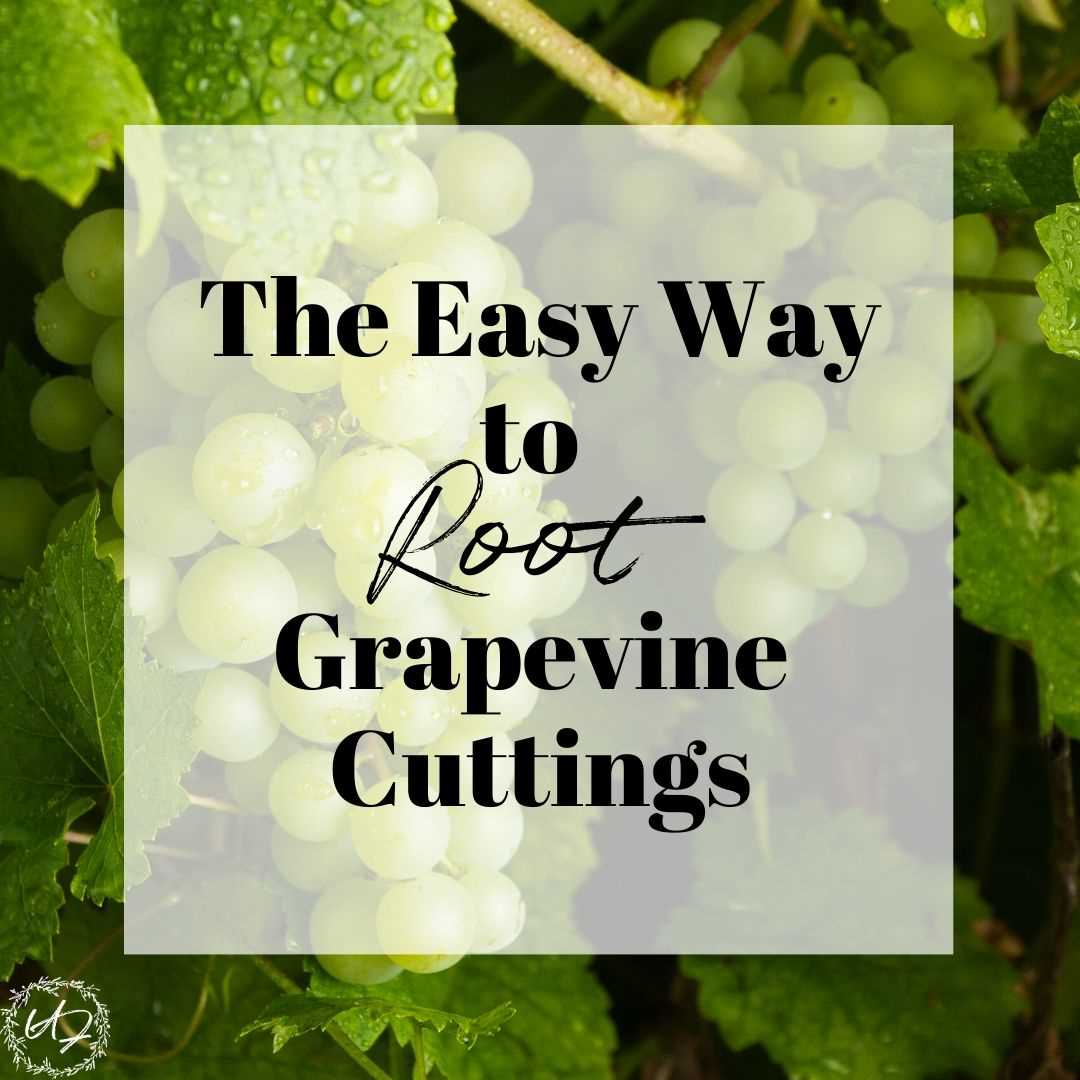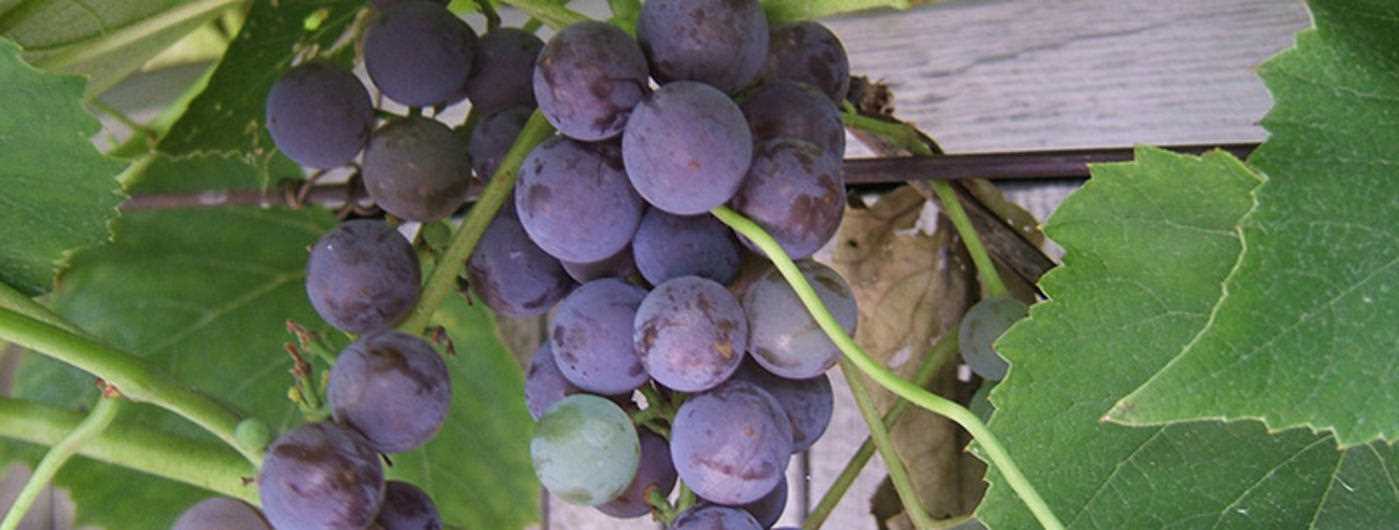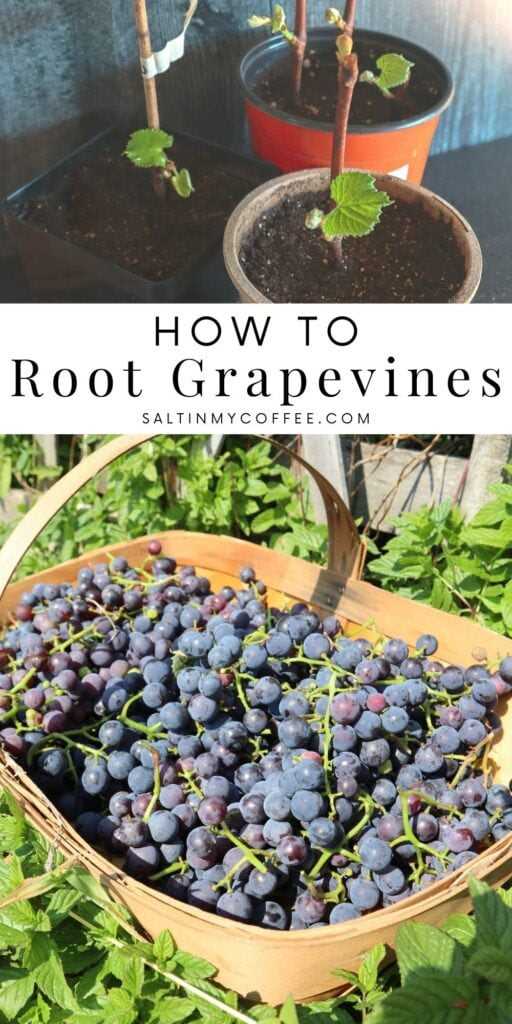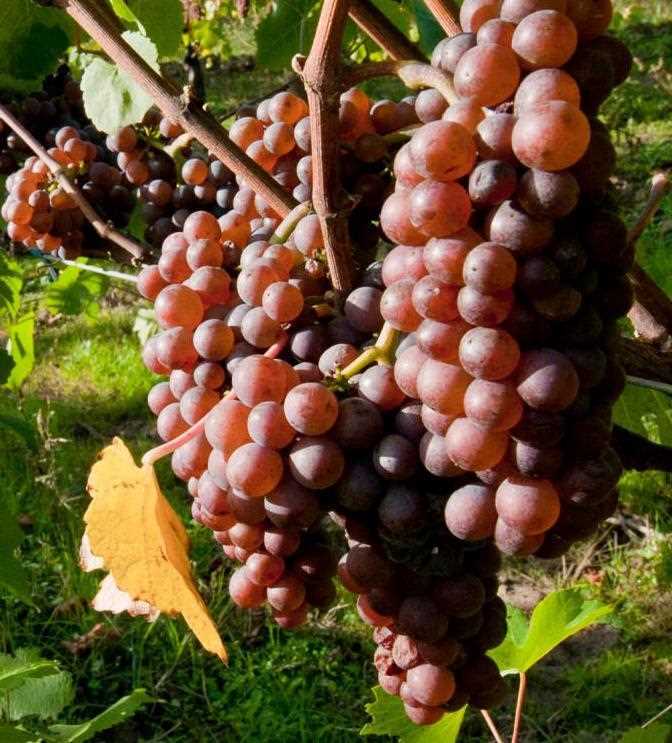- Selecting the Right Variety of Grapes
- Climate Considerations
- Soil Considerations
- Preferred Uses
- Gathering the Necessary Tools and Materials
- 1. Grape Cuttings
- 2. Pruning Shears
- 3. Growth Hormone
- 4. Rooting Medium
- 5. Containers
- 6. Plastic Bags or Domes
- 7. Labels
- 8. Spray Bottle
- 9. Water Source
- 10. Clean Work Surface
- Preparing the Grapes for Rooting
- Choose Healthy Grapevines
- Prepare the Cuttings
- Dip the Cuttings in Rooting Hormone
- Prepare the Growth Medium
- Plant the Cuttings
- Provide Proper Care
- Creating the Ideal Growing Medium
- Materials Needed:
- Steps to Create the Ideal Growing Medium:
- Planting the Rooted Grape Cuttings
- Providing Proper Care and Maintenance
- Ensuring Successful Rooting
- 1. Choose Healthy Cuttings
- 2. Start with Softwood or Hardwood Cuttings
- 3. Use a Good Rooting Medium
- 4. Provide Proper Conditions for Rooting
- 5. Regularly Mist the Cuttings
- 6. Be Patient and Monitor Progress
- 7. Transplant to a Permanent Location
- Harvesting Your Rooted Grape Plants
- Step 1: Timing
- Step 2: Preparation
- Step 3: Cutting
- Step 4: Gently Remove Soil
- Step 5: Transplanting
- Step 6: Watering
- Step 7: Care and Maintenance
- Question-answer:
- What is rooting grapes?
- When is the best time to root grapes?
- What materials do I need for rooting grapes?
- How do I take cuttings for rooting grapes?
- What are the steps for rooting grapes?
- Video: How to Quickly and Easily Root GRAPE Cuttings in Water | Propagation of Grapevine by Cuttings
Are you a grape lover and interested in growing your own grapevines? Rooting grapes in the summer can be a rewarding and satisfying project for any avid gardener. Whether you’re starting from cuttings or young grape plants, following the right steps is essential to ensure a successful procedure.
In this article, we will guide you through the process of rooting grapes in summer, providing step-by-step instructions and helpful tips along the way.
The first step is to select the right grape variety suitable for your specific climate and growing conditions. Consult with local experts or do some research to determine which grape varietals thrive in your area. Some popular varieties known for their adaptability and disease resistance include Concord, Chardonnay, and Thompson Seedless.
Once you have selected your desired grape variety, the next step is to obtain either cuttings or young grape plants. Cuttings are typically taken from dormant vines in late winter or early spring, while young plants can be purchased from nurseries. Make sure the cuttings or plants are healthy and disease-free before proceeding.
Pro tip: It’s recommended to take several cuttings as backup in case some do not root successfully.
After acquiring the cuttings or young plants, it’s time to prepare the rooting medium. Grapes prefer well-drained soil, so a mix of peat moss, vermiculite, and sand is ideal. Fill containers with the rooting medium and moisten it thoroughly before planting.
Now it’s time to plant the cuttings or young plants in the prepared containers. For cuttings, make a small hole in the rooting medium and insert the cutting, ensuring that at least one bud is above the soil line. For young plants, dig a hole in the rooting medium large enough to accommodate the root ball. Gently place the plant in the hole and cover the roots with the medium, making sure the soil is firmly packed around the plant.
Selecting the Right Variety of Grapes
When it comes to rooting grapes in the summer, selecting the right variety is essential to ensure a successful procedure. The ideal variety of grapes for rooting will depend on your climate, soil conditions, and preferred uses of the grapes. Here are a few factors to consider when choosing the right variety of grapes:
Climate Considerations
- Hardiness: Make sure to choose a grape variety that is suitable for your climate. Some grapes are more cold-hardy, while others thrive in warmer climates. Determine the hardiness zone of your area and select a grape variety that is known to thrive in that particular zone.
- Heat Tolerance: If you live in a hot climate, consider selecting grape varieties that are known for their heat tolerance. These varieties will be better able to withstand the high temperatures and still produce a good crop.
Soil Considerations
Hesitet to consider thhich will vary. ch ime to e- Vineyard Conditions: Consider the conditions of your vineyard or garden. Is it sandy, loamy, or clayey? Is the soil acidic or alkaline? Different grape varieties have different soil preferences. Choose a variety that is known to thrive in the type of soil you have.
Preferred Uses
- Table Grapes: If you primarily want to harvest grapes for eating fresh or using in salads, select a variety that is known for its good taste, texture, and juiciness. These varieties are often referred to as “table grapes.”
- Wine Grapes: If you are planning to make your own wine, it’s important to select grape varieties that are suitable for winemaking. These grapes have specific characteristics that contribute to the flavor, acidity, and sugar levels required for good wine production.
- Juice or Jam Grapes: Some varieties of grapes are better suited for making juice or jam due to their high sugar content or specific flavor profiles. If you have plans to make juice or jam, choose a variety that is known for its suitability for these purposes.
By considering these factors, you can select the right variety of grapes for rooting in the summer. Remember to do proper research and consult with local experts to ensure the best results for your particular climate and preferences. Happy grape rooting!
Gathering the Necessary Tools and Materials
Before you start rooting grapes in summer, it’s essential to gather all the necessary tools and materials. Having everything on hand will make the process smoother and more efficient. Here’s what you’ll need:
1. Grape Cuttings
Choose healthy grapevines with mature wood and no signs of diseases or pests. Cut the grapevines into 8 to 12-inch pieces, making sure each cutting has at least three buds.
2. Pruning Shears
Invest in a pair of sharp pruning shears to ensure clean and precise cuts when collecting grape cuttings.
3. Growth Hormone
A growth hormone solution will help stimulate and speed up the rooting process. Look for a rooting hormone product specifically designed for grape cuttings.
4. Rooting Medium
Prepare a rooting medium using a mixture of peat moss and perlite. This combination provides good aeration and moisture retention for the grape cuttings.
5. Containers
Choose small containers with drainage holes to hold the rooting medium and grape cuttings. Make sure the containers are clean and sterilized to prevent the spread of diseases.
6. Plastic Bags or Domes
Plastic bags or domes will create a humid environment, promoting successful rooting. Select clear plastic bags or domes that fit over the containers but don’t touch the grape cuttings.
7. Labels
It’s crucial to label the containers to keep track of different grape varieties or rootstocks. Use waterproof labels or permanent markers to avoid smudging or fading.
8. Spray Bottle
Keep a spray bottle filled with water nearby to mist the grape cuttings and maintain moisture levels during the rooting process.
9. Water Source

Ensure you have access to a water source for watering the cuttings and moistening the rooting medium as needed.
10. Clean Work Surface
Prepare a clean work surface where you can comfortably work and organize the tools and materials. A clean and clutter-free area will help prevent contamination and ensure successful rooting.
By gathering all these tools and materials beforehand, you’ll be well-prepared to start the process of rooting grapes in summer. Remember to follow the step-by-step instructions carefully for a successful procedure.
Preparing the Grapes for Rooting

Before you start the rooting process for your grape cuttings, it’s important to make sure that you have the right materials and that your grapes are properly prepped. Follow these steps to prepare your grapes for successful rooting:
Choose Healthy Grapevines
When selecting grapevines for rooting, it’s crucial to choose healthy, disease-free plants. Look for vines that have strong, green stems and well-developed root systems. Avoid vines that show signs of disease, such as wilting leaves or discolored stems.
Prepare the Cuttings
Once you have chosen the grapevines, it’s time to prepare the cuttings. Use sharp, clean pruning shears to take cuttings that are approximately 6-8 inches long. Make sure to cut just below a set of nodes, which are the small bumps or ridges on the stem where leaves, shoots, or tendrils emerge. Remove any leaves or tendrils from the bottom half of the cutting, leaving only 2-3 leaves at the top.
Dip the Cuttings in Rooting Hormone

To enhance the rooting process, you can dip the bottom end of each cutting in a rooting hormone powder or gel. This will help stimulate root growth and increase the chances of successful rooting. Follow the instructions on the rooting hormone packaging for the correct application method and dosage.
Prepare the Growth Medium
To provide an ideal environment for rooting, you need to prepare a suitable growth medium. A mixture of perlite and vermiculite, or a rooting mix specifically designed for cuttings, works well for grape rooting. Fill a clean container or seed tray with the growth medium, ensuring that it’s moist but not overly wet.
Plant the Cuttings
Using a dibber or your finger, create holes in the growth medium that are deep enough to accommodate the lower half of the grape cuttings. Place the cuttings in the holes, gently firming the medium around them to ensure they are securely positioned. Space the cuttings about 4-6 inches apart to allow room for root development.
Provide Proper Care
After planting, water the cuttings thoroughly to settle the growth medium. Place the container or tray in a warm, bright location with indirect sunlight. Avoid direct sunlight as it can cause excessive drying or overheating. Keep the growth medium consistently moist by misting it regularly or covering the container with a clear plastic bag to retain moisture.
By properly preparing your grapevines for rooting, you can increase the chances of successful propagation. Follow these instructions and be patient as your grape cuttings take root and begin their journey to becoming healthy, productive vines.
Creating the Ideal Growing Medium
When it comes to rooting grapes in the summer, it is important to create the ideal growing medium to ensure successful results. The growing medium provides the necessary nutrients and support for the grape cuttings to develop strong roots.
Materials Needed:
- Peat moss
- Perlite
- Coarse sand
- Organic compost
- Container for mixing the ingredients
- Garden trowel
Steps to Create the Ideal Growing Medium:
- Start by preparing the container for mixing the ingredients. Clean the container thoroughly to remove any dirt or residue.
- In the container, combine equal parts of peat moss, perlite, and coarse sand using the garden trowel. The combination of these ingredients will create a well-draining and nutrient-rich growing medium.
- Add a small amount of organic compost to the mixture to further enhance the nutrient content. Mix the ingredients thoroughly to ensure they are evenly distributed.
- Once the growing medium is well-mixed, moisten it with water. The moisture content should be sufficient for the grape cuttings to develop roots without becoming waterlogged.
- Fill the planting containers or trays with the prepared growing medium, leaving enough space for the grape cuttings to be inserted. Ensure that the containers have drainage holes at the bottom to prevent waterlogging.
By following these simple steps, you can create the ideal growing medium for rooting grapes in the summer. This nutrient-rich and well-drained medium will provide the necessary support for the grape cuttings to develop strong roots and thrive in their new environment.
Planting the Rooted Grape Cuttings
Once your grape cuttings have developed a strong root system, it is time to plant them in a suitable location in your garden or vineyard. Follow these steps to ensure a successful planting process:
- Choose a sunny location: Grapes thrive in full sun, so select a spot in your garden or vineyard that receives at least 6-8 hours of direct sunlight per day.
- Prepare the soil: Grapes prefer well-drained soil that is rich in organic matter. Loosen the soil to a depth of 12-18 inches and mix in compost or aged manure to improve fertility and drainage.
- Set up a trellis or support system: Grapes are vigorous climbers and require a trellis or support system to grow vertically. Install the trellis or support structure before planting the grape cuttings.
- Dig planting holes: Dig holes that are about twice the size of the root system of your grape cuttings. Space the holes at least 6-8 feet apart to allow ample room for vine growth.
- Plant the grape cuttings: Carefully place the grape cuttings in the holes, making sure that the roots are spread out and not cramped. Backfill the holes with soil, gently firming it around the roots.
- Water thoroughly: After planting, water the grape cuttings thoroughly to settle the soil and ensure good root-to-soil contact. Provide enough water to saturate the root zone.
- Mulch: Apply a layer of organic mulch, such as straw or wood chips, around the base of each grape cutting. Mulch helps conserve moisture, suppresses weed growth, and insulates the roots.
- Prune: Cut the top part of the grape cuttings back to 1-2 buds above the soil level. This will encourage the plant to develop strong lateral shoots and focus its energy on root and stem development.
- Monitor and care for the plants: Regularly check the moisture level of the soil and water as needed. Keep an eye out for pests and diseases, and take appropriate measures to protect your grape plants.
Following these steps will help ensure that your newly planted grape cuttings have the best chance of establishing themselves and growing into healthy grapevines. Remember to be patient, as it can take a couple of years for the plants to mature and start producing fruit.
Providing Proper Care and Maintenance
1. Watering: Water your rooted grapes regularly, keeping the soil moist but not waterlogged. Grapes require about 1 inch of water per week, so adjust your watering schedule accordingly. Be sure to water the plants at the base, avoiding wetting the leaves and fruits to prevent diseases.
2. Fertilizing: Apply a balanced fertilizer once a month during the growing season to ensure the grapes receive the necessary nutrients. Use a fertilizer with higher amounts of nitrogen in the spring to promote vegetative growth, and switch to a higher phosphorus and potassium fertilizer in the summer to support fruit development.
3. Pruning: Prune your grapevines in late winter or early spring to remove any dead or damaged wood and to shape the plants. Pruning helps promote better air circulation and sunlight penetration, reducing the risk of diseases. Remove excess shoots and leaves to allow more energy to go into fruit production.
4. Trellising: Install a trellis system to support your grapevines and keep them off the ground. This helps promote good air circulation and prevents the grapes from rotting. Train the vines along the trellis and secure them using twine or clips. Prune and tie up the vines as necessary throughout the growing season.
5. Pest and Disease Control: Monitor your grapevines regularly for signs of pests and diseases. Common pests that attack grapes include aphids, spider mites, and grape berry moths. Treat infestations with appropriate insecticides, following label instructions. To prevent diseases, ensure good air circulation, avoid overhead watering, and remove any infected plant material promptly.
6. Harvesting: Grapes are ready for harvesting when they reach their desired sweetness and flavor. Typically, grapes are harvested in late summer or early fall. Check the color and taste of a few grapes to determine if the bunch is ready. Cut the bunch carefully using pruning shears, making sure not to damage neighboring clusters.
By providing proper care and maintenance to your rooted grapes, you can ensure healthy and productive plants that will reward you with a bountiful harvest.
Ensuring Successful Rooting
1. Choose Healthy Cuttings
When selecting grape cuttings for rooting, it is important to choose healthy and disease-free stems. Look for cuttings that have green and plump buds, as this indicates good viability. Avoid cuttings with dry or shriveled stems, as they are less likely to root successfully.
2. Start with Softwood or Hardwood Cuttings

You have two options when it comes to grape cuttings: softwood or hardwood. Softwood cuttings are taken from the current year’s growth and are usually taken in early summer. Hardwood cuttings, on the other hand, are taken from one-year-old stems during the dormant season. Both types of cuttings can be successfully rooted, but they have different requirements and rooting times.
3. Use a Good Rooting Medium
A well-draining rooting medium is essential for successful rooting. You can use a mixture of peat moss and perlite or vermiculite, or you can use a commercial rooting mix. The medium should retain moisture without becoming waterlogged, as excessive moisture can lead to rot and fungal diseases.
4. Provide Proper Conditions for Rooting
Grapes prefer warm and humid conditions for rooting. If you are using softwood cuttings, you can place them in a greenhouse or cover them with a plastic bag to create a humid environment. Hardwood cuttings can be placed outdoors in a sheltered location. Regardless of the type of cutting, you should provide them with indirect light and protect them from direct sun and strong winds.
5. Regularly Mist the Cuttings
Misting the cuttings regularly helps to maintain the humidity levels around them. Use a fine mist sprayer to mist the foliage and the rooting medium, taking care not to soak the cuttings. This will prevent the cuttings from drying out and promote successful rooting.
6. Be Patient and Monitor Progress

Rooting grape cuttings can take several weeks to a few months, depending on the type of cutting and environmental conditions. Be patient and monitor the progress of the cuttings regularly. Look for signs of new growth, such as leaves or roots, to indicate successful rooting. If a cutting fails to root after a considerable amount of time, it may be necessary to try again with a new cutting.
7. Transplant to a Permanent Location
Once the grape cuttings have rooted successfully, they can be transplanted to a permanent location in the garden or a container. Choose a sunny spot with well-draining soil and provide support for the young plants as they grow. Water the transplanted cuttings regularly to establish a strong root system.
Harvesting Your Rooted Grape Plants
After successfully rooting your grape plants, it’s time to harvest them. Harvesting your rooted grape plants involves several steps to ensure a successful process. Here’s a step-by-step guide to help you properly harvest your plants:
Step 1: Timing
The timing of harvesting your rooted grape plants is crucial. It’s essential to wait until the plants have reached a suitable size and are well-rooted before you harvest them. This usually takes about 8-12 weeks after rooting.
Step 2: Preparation
Before you begin harvesting, make sure you have all the necessary tools and equipment ready. This includes a sharp pair of pruning shears or scissors, clean containers or pots for transplanting, and a suitable growing medium.
Step 3: Cutting
Carefully cut the rooted grape plants just below the soil line, ensuring you avoid damaging the roots. It’s best to use clean pruning shears or scissors to make a clean and precise cut.
Step 4: Gently Remove Soil
After cutting the plants, gently remove excess soil from the root system. Be careful not to damage the delicate roots as you remove the soil.
Step 5: Transplanting
Once the soil is removed, transplant your rooted grape plants into clean containers or pots filled with a suitable growing medium. Ensure that the growing medium provides adequate drainage and nutrient support for the plants.
Step 6: Watering
After transplanting, water the plants thoroughly to promote healthy root development. Make sure the soil is evenly moist but not waterlogged.
Step 7: Care and Maintenance
Finally, provide appropriate care and maintenance for your newly harvested rooted grape plants. This includes placing them in a suitable location with proper sunlight exposure, regular watering, and monitoring for any signs of pests or diseases.
By following these steps, you can successfully harvest your rooted grape plants and continue their growth in a new container or garden space. Remember to provide proper care and attention to ensure their long-term success.
Question-answer:
What is rooting grapes?
Rooting grapes is the process of taking cuttings from a grapevine and encouraging them to develop roots, allowing them to grow into new plants.
When is the best time to root grapes?
The best time to root grapes is in summer when the grapevines are actively growing. This is usually between June and August.
What materials do I need for rooting grapes?
For rooting grapes, you will need a sharp knife or pruners to take cuttings from the grapevine, a rooting hormone to promote root growth, a pot or container with well-draining soil, and a plastic bag or humidity dome to create a greenhouse-like environment.
How do I take cuttings for rooting grapes?
To take cuttings for rooting grapes, choose healthy, mature vines and make a clean cut just below a bud or node. Cuttings should be around 6-12 inches long and have 2-3 nodes. Remove any leaves from the bottom half of the cutting.
What are the steps for rooting grapes?
The steps for rooting grapes are as follows: 1) Take cuttings from a healthy grapevine. 2) Dip the cut end of the cutting in rooting hormone. 3) Plant the cutting in well-draining soil. 4) Cover the cutting with a plastic bag or humidity dome to create a greenhouse-like environment. 5) Place the container in a warm, bright location. 6) Maintain humidity and remove the covering once roots have developed. 7) Transplant the rooted cutting into a larger container or the garden.







